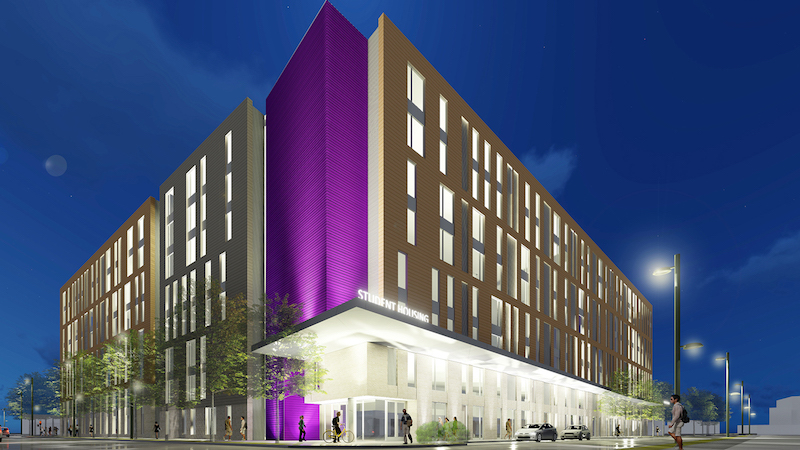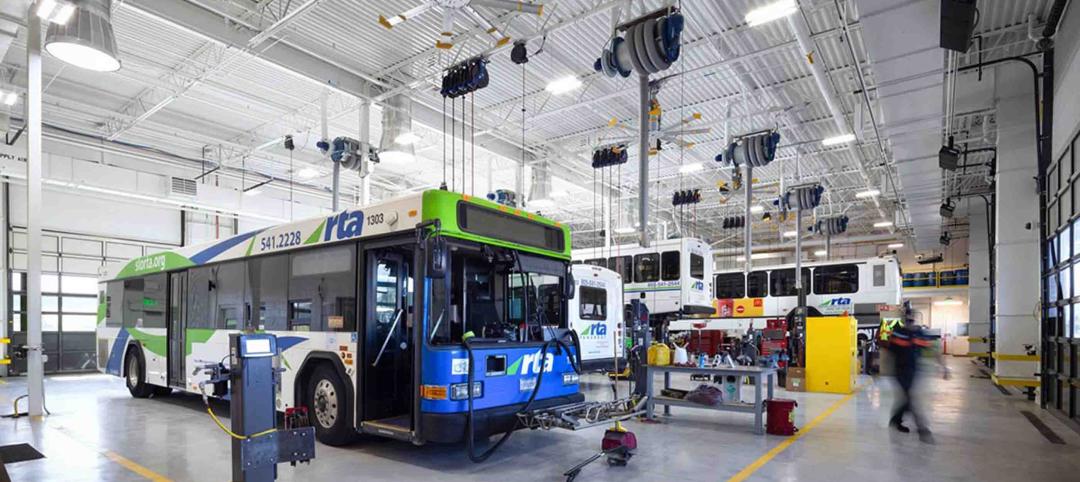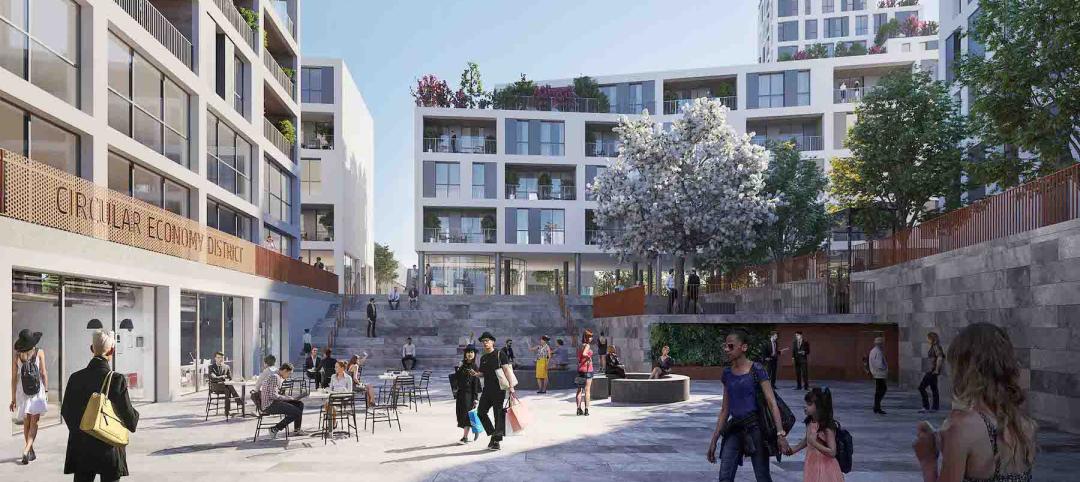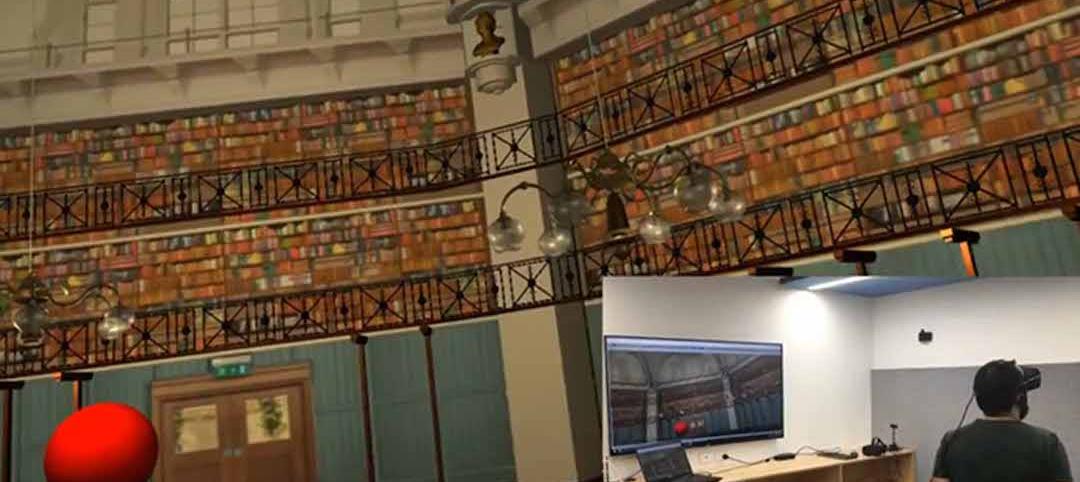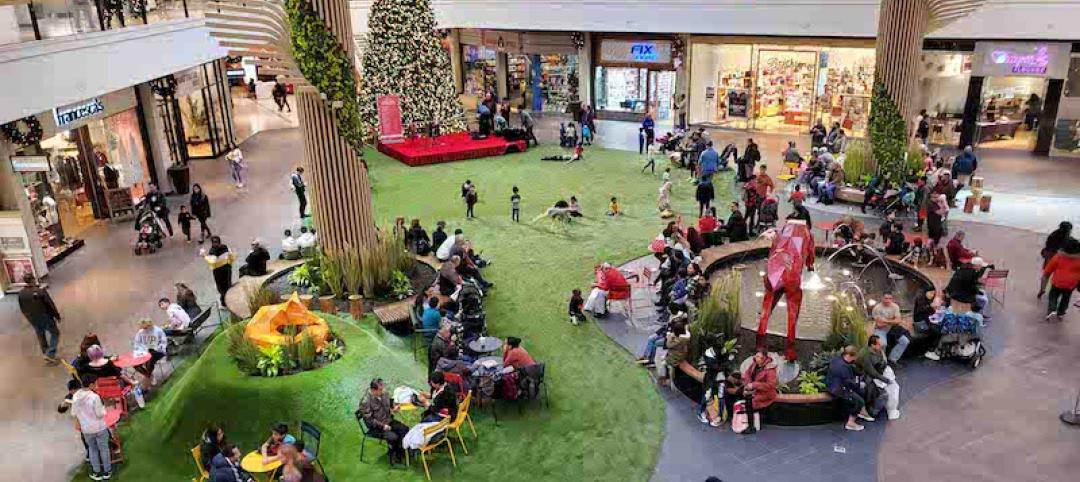Multifamily housing and student housing have many similarities. Not only do they share many of the same building methods and construction types, but design team members skilled in multifamily housing often adjust well to student housing.
However, there are specific and distinct differences that make student housing a unique challenge. There are nuances between unit, building size, and organization. There are also fundamental differences in the design theory that create a successful residential community. Knowing the student resident is central to understanding and informing the decision making of every critical component of the building.
The student resident
The student resident is a concept distinct and separate from the young professional or family
that typically occupy traditional multifamily housing. The design for student residents is fundamentally different than the typical young professionals or families that live in multifamily because the goal is to persuade a student to spend as much time outside of their room as practical.
Residents in a typical multifamily project expect greater privacy than student residents who are eager to meet neighbors, roommates, and learn through new experiences. While students have certain needs that require greater privacy, we encourage them to get out and study in a group, make connections with other students, and engage in a communal academic culture.
Units
Student apartments have smaller kitchens than multifamily apartments. The apartments tend to be larger, with as many as four to six students living together. Housing for upper-class students often includes private bathrooms for each of those students. To balance this, we plan for more community space outside the apartment, including studies, lounges, game rooms, and other active amenities. Academic and social spaces are broken down by wing at every level to make cohesive and identifiable communities where students have familiarity with their neighbors and build lasting relationships.
Parity is a fundamental principle of student housing since students are renting by the bedroom and not by the square foot—this provides simplicity in pricing. This results in fewer unit types than multifamily housing, and the units stack with great regularity. Fewer types of units in a building allow a project to be affordable while still providing the rich academic and social experience students expect.
A four-bedroom, four-bathroom apartment with a small kitchen is one of the most popular housing designs for upper class students.
Façade
The nature of the student resident also impacts the façade.
Since I have been working in student housing, I have not designed a single balcony, as student residents can lack the maturity level to manage them and owners see the space as a liability and non-revenue generating. In addition, budgets also mandate a standard of one window per bedroom. Parity demands that there be stricter adherence to the standard unit size and precludes undulating the exterior wall to create an effect in elevation. All these limitations present an enormous challenge to designers, as we are tasked with creating interesting facades that feel luxurious without the tools commonly available to a standard multifamily housing designer. Accomplishing this requires disciplined design moves and changes in material and pattern that emphasize simplicity and restraint.
While multifamily housing and student housing share a common building form, the student resident drives the innovation of new spaces to cultivate an experience where students are stimulated to learn and develop while still feeling comfortable and at home. The demands to accommodate this type of population poses significant challenges to designers, and meeting the needs of the student resident provides a great opportunity to advance the social and academic education of a generation of young people through housing.
More from Author
Stantec | Apr 18, 2024
The next destination: Passive design airports
Today, we can design airports that are climate resilient, durable, long-lasting, and healthy for occupants—we can design airports using Passive House standards.
Stantec | Mar 18, 2024
A modular construction solution to the mental healthcare crisis
Maria Ionescu, Senior Medical Planner, Stantec, shares a tested solution for the overburdened emergency department: Modular hub-and-spoke design.
Stantec | Nov 20, 2023
8 strategies for multifamily passive house design projects
Stantec's Brett Lambert, Principal of Architecture and Passive House Certified Consultant, uses the Northland Newton Development project to guide designers with eight tips for designing multifamily passive house projects.
Stantec | Apr 10, 2023
Implementing human-centric design in operations and maintenance facilities
Stantec's Ryan Odell suggests using the human experience to advance OMSF design that puts a focus on wellness and efficiency.
Stantec | Jul 6, 2022
5 approaches to a net zero strategy that communities can start right now
Whether your community has started on a plan or is still considering net zero, now is the time for all of us to start seriously addressing climate change.
Stantec | Feb 14, 2022
5 steps to remake suburbs into green communities where people want to live, work, and play
Stantec's John Bachmann offers proven tactic for retrofitting communities for success in the post-COVID era.
Stantec | Feb 8, 2022
How gaming technology is changing the way we design for acoustics
Adding 3D sound from gaming engines to VR allows designers to represent accurate acoustic conditions to clients during design.
Stantec | Dec 15, 2021
EV is the bridge to transit’s AV revolution—and now is the time to start building it
Thinking holistically about a technology-enabled customer experience will make transit a mode of choice for more people.
Stantec | Sep 3, 2021
Passports to a net-zero carbon future
How materials passports can help designers achieve social value and net-zero carbon.
Stantec | Aug 25, 2021
The mall of the future: Less retail, more content
For the mall to survive, it will need to embrace nontraditional uses and “messy vitality.” Here’s how to do it.

